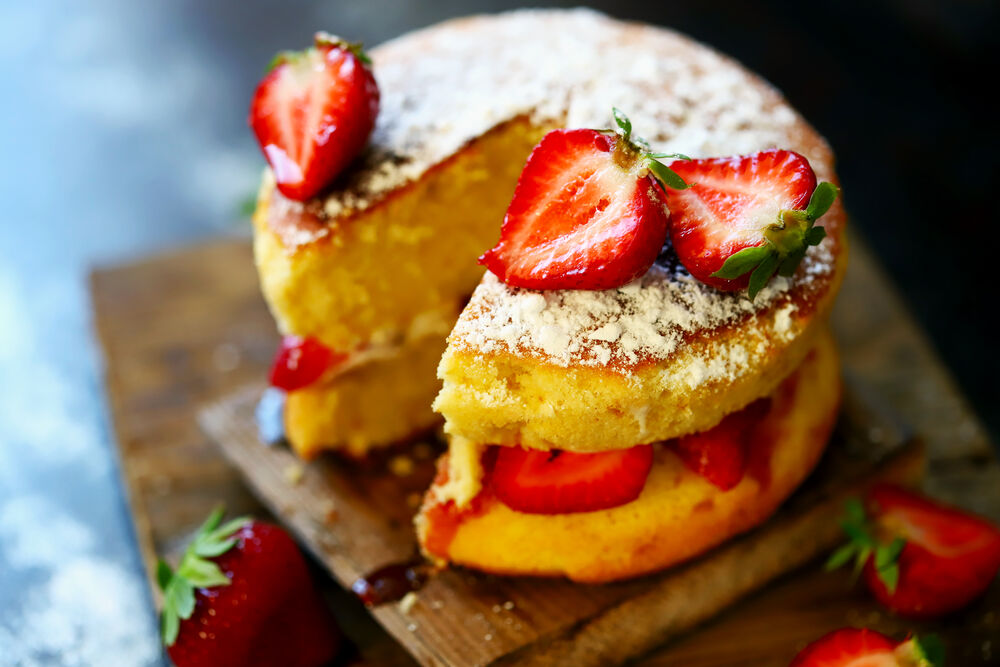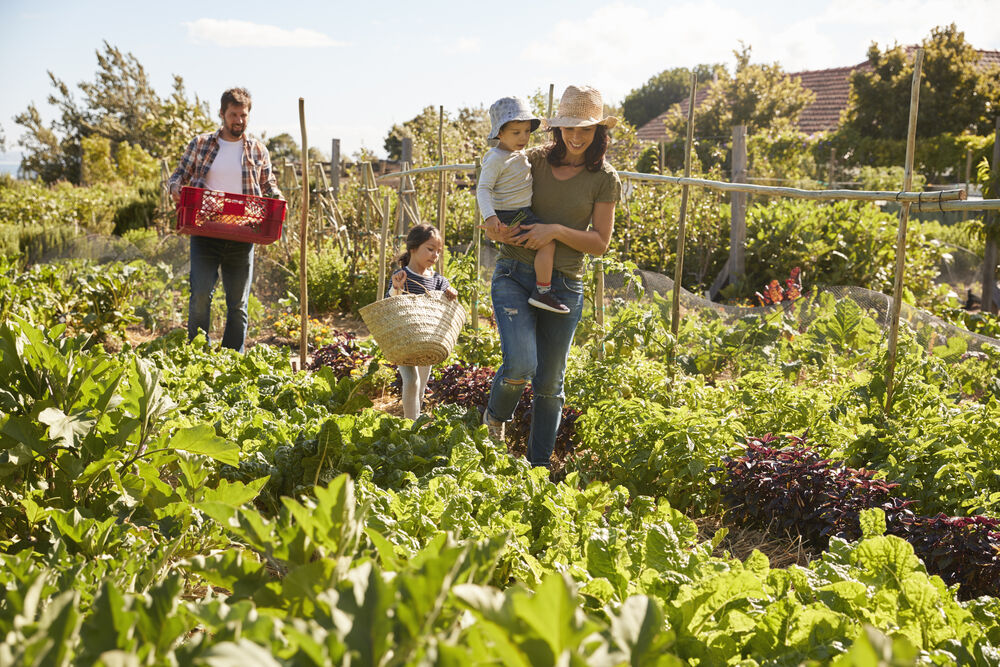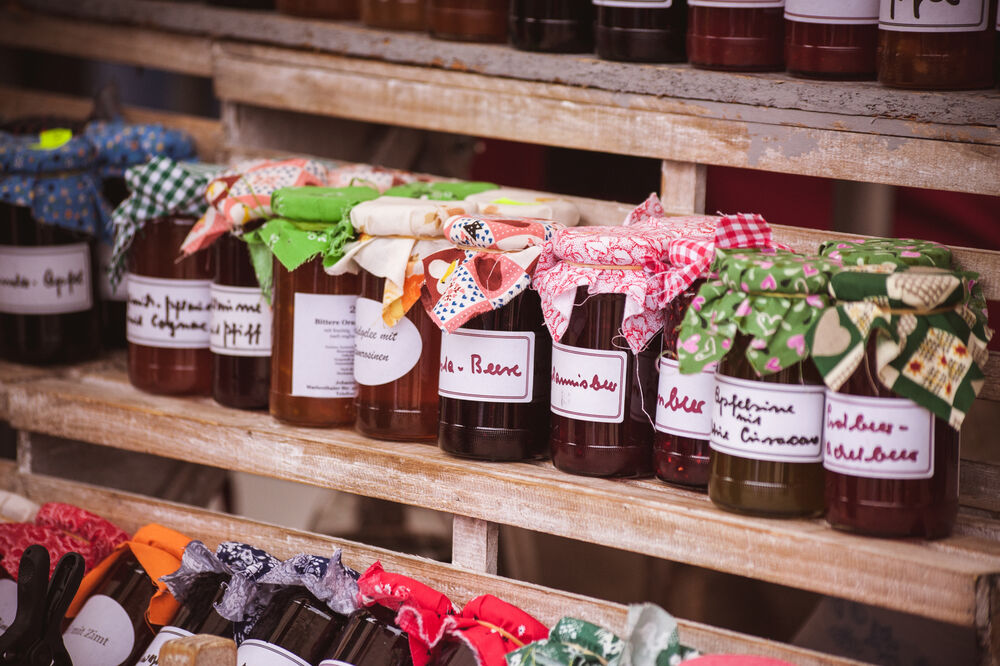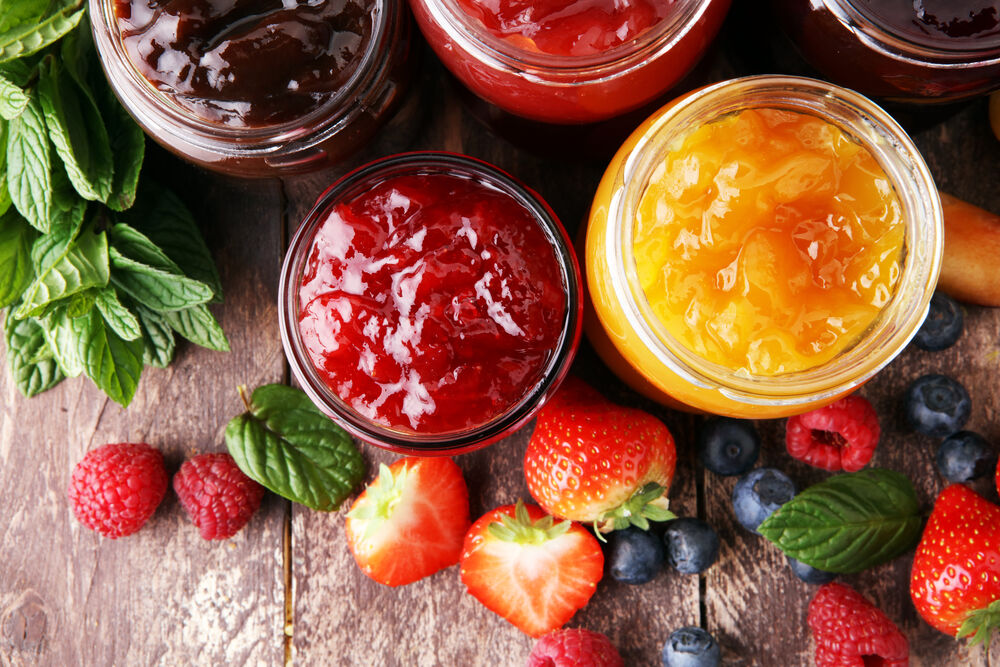Happiness is homemade jam for breakfast – let’s get ready for jam-making season!

Preserving fruit and vegetables in the form of jams, pickles and chutneys became popular during the war years as people had limited access to fresh fruit and veg. And of course, most households didn’t have the luxury of refrigeration that we take as a basic today – so shelf-life of fresh product was short.
With a rise in popularity for sustainable living, preserve making has become more fashionable in the last decade. With more of us working from home, on furlough and nowhere to go/nothing to do, baking has become a highly popular pastime – and what better way to perfect your sponge cake than with homemade jam. Yum! Pretty jars also bring a touch of decadence to your larder or kitchen shelves. We think there is something extremely satisfying about making your own jams and other preserves.

There are some distinct times of the year for preserve making in the UK although now you can buy most fruits all year round, you don’t necessarily have to stick to these guidelines:
Get ready for jam making season this summer.

Whether you have fruit trees in your garden, rent an allotment, enjoy country walks where hedgerows provide a plentiful source of fresh and free ingredients, or you simply buy fruit from your local farm shop, pick-your-own or supermarket, here are some top tips courtesy of the WI.
Top jam making tips from the best jam makers – The WI
The Women’s Institute (WI) is synonymous with jam making. There’s a full list of tips at the end of this blog but we want to talk a little more about their first tip – sterilising your jars.
This is a vital step for jam making. Preserve-making novices may miss this out as they don’t understand its importance; but it’s essential to ensure the longevity of your preserve. Just a like a baby’s bottle, jam jars need be squeaky clean and free from germs and bacteria – otherwise you’ll be throwing your prized batch away long before it best before date. But how do you sterilise jars?

Steam ovens are not just for cooking

Along with steaming veg and fish to perfection, making crispy roast potatoes and meats with no oil or bringing left-over pizza back to life, Bosch’s steam ovens are super handy for preserve making. Just pop your jars in your steam oven and sterilise – it’s so simple.
Heating things up again!

Before you add your jam to your jars, it’s important to warm your jars to avoid cracking. And here we have another Bosch Kitchen Appliance for you – the warming drawer.
A warming drawer is not just for warming plates. From delicious slow-cooked lamb through to warming up your jam jars – its benefits are varied.
The Bosch warming drawer has 4 settings:
So now you know how to sterilise and warm your jars, here’s the WI’s top tips for jam making.
1) Sterilise your jars. To do this, wash them in very hot, soapy water. Rinse well and place on a baking tray in the oven to dry completely.
2) Choose ripe but not soft fruit. Use fruit when it is at the height of its season. It will be at its best as well as its cheapest.
3) the fruit until its soft before adding the sugar.
4) Ensure you use the right sugar; jam/preserving/granulated sugar.
5) Using a temperature probe may provide a more accurate reading than a sugar thermometer.
6) Have four or five saucers in the freezer or fridge, ready to perform multiple saucer tests at regular intervals when you think your jam is nearly ready.
7) Saucer test for a good set: When the jam is boiling rapidly and you think it is ready to pot, take a saucer out of the freezer and drop a small spoonful onto it. Allow to cool for a minute then push your finger through the jam – if it wrinkles it’s ready, if not boil for a few more minutes. Continue testing until a set is reached.
8) When recycling jam jars, it is possible to re-use a lid as long as it fits well and does not have the remnants or taint of its previous contents.
9) Don’t put the labels on until the jam is cold – the heat will prevent them from sticking properly.
10) If things go wrong: if the jam hasn’t set after cooling and potting, tip it all back into the pan and boil again, adding the juice of a small lemon or a sachet of pectin.
Thatcham Kitchens is a friendly kitchen showroom where you always receive a warm welcome. Our non-sales approach is appreciated by our customers. For us, it’s about matching you with the best kitchen and appliances to suit your lifestyle.
Talk to us if you have any questions about Bosch kitchen appliances. We are Bosch 5***** experts so know a thing or two about these products and can always offer competitive pricing compared to larger online retailers and the high street chains.
